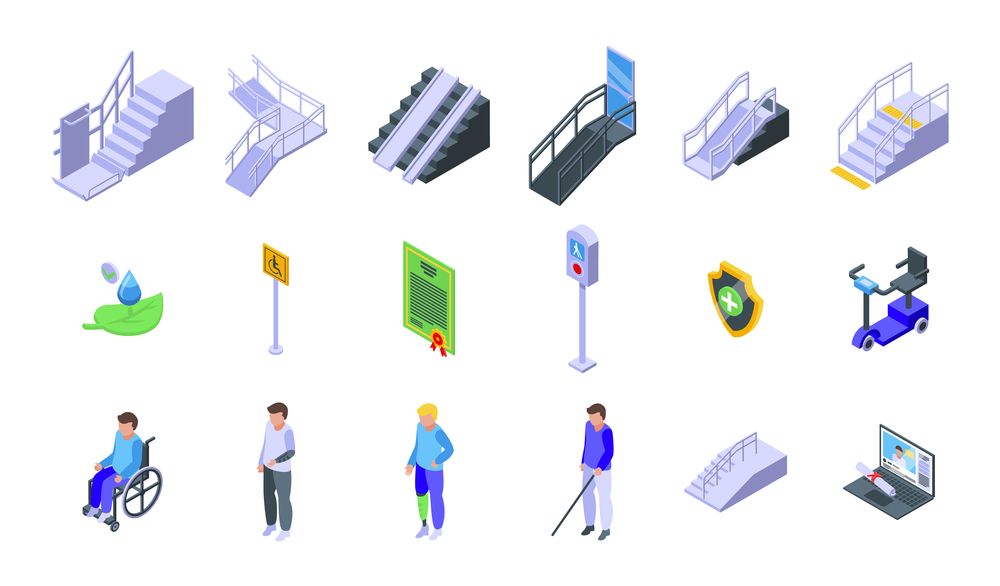In a world striving for inclusivity, it’s imperative to recognize and address the barriers that prevent individuals with disabilities from fully participating in society. Accessible infrastructure goes beyond physical accommodations; it’s about fostering a culture of equality and ensuring that everyone has the opportunity to navigate the world independently and with dignity.
Imagine living in a city where you can easily move around, access public services, and participate in social and economic activities, regardless of your physical or mental condition. Sounds like a dream, right? Well, for millions of people with disabilities around the world, this is not only a dream, it is a human right that is being withheld.
According to the World Health Organization, more than one billion people, or 15% of the world’s population, live with some form of disability. Disability is a diverse and complex phenomenon and can result from various factors, such as accidents, diseases, ageing, or environmental conditions. People with disabilities face many barriers and challenges in their daily lives, such as discrimination, stigma, poverty, and exclusion. These barriers are often exacerbated by the lack of accessible and inclusive infrastructure, which prevents them from enjoying their full potential and dignity.
Understanding Accessible Infrastructure
Accessible infrastructure refers to the physical and digital environments that are designed and built to accommodate the needs and preferences of people with different abilities and impairments. This includes public spaces, such as parks, sidewalks, and markets; transport systems, such as buses, trains, and taxis; and buildings, such as schools, hospitals, and offices. Accessible infrastructure enables people with disabilities to access essential services, such as health, education, and employment; to exercise their rights and responsibilities, such as voting, banking, and legal aid; and to engage in social and cultural activities, such as sports, arts, and entertainment.
Benefits of Providing Accessible Infrastructure
Accessible infrastructure is not only beneficial for people with disabilities but for the whole society and economy. It can improve the quality of life, well-being, and happiness of all citizens, especially the elderly, pregnant women, children, and people with temporary impairments. It can also increase the productivity, innovation, and competitiveness of businesses and organizations, by creating more opportunities and markets for people with diverse skills and talents. Moreover, it can contribute to the achievement of the United Nations’ Sustainable Development Goals (SDGs), which aim to end poverty, protect the planet, and ensure peace and prosperity for all by 2030.
Why Accessible Infrastructure Matters
Accessible infrastructure goes beyond physical accommodations; it encompasses a mindset of inclusivity and a commitment to removing barriers. It involves creating environments that are usable by all individuals, regardless of their physical abilities. This includes accessible public transportation, buildings, sidewalks, parks, and recreational facilities, among other aspects of community infrastructure.
Key Components of Accessible Infrastructure
1. Physical Accessibility:
This involves the removal of physical barriers such as steps, narrow doorways, and inaccessible restrooms. Ramps, elevators, and wide doorways are crucial for ensuring that individuals with mobility impairments can navigate public spaces with ease.
2. Sensory Accessibility:
People with sensory disabilities benefit from infrastructure that takes into account their needs. This can include visual signage for individuals with low vision, auditory signals for individuals with hearing impairment, and quiet room for someone with neurodiversity challenges.
3. Technological Accessibility:
In today’s digital age, it is essential to ensure that technology and online platforms are accessible to individuals with disabilities. This includes websites, apps, and digital interfaces that are compatible with screen readers and other assistive technologies.
Challenges of Accessible Infrastructure
Many challenges and barriers need to be overcomed, such as:
1. Lack of awareness:
Many people, including policy makers, planners, designers, and developers, are not aware of the needs and preferences of people with disabilities, and the benefits of accessible infrastructure. They may have stereotypes, prejudices, or misconceptions about people with disabilities, and their abilities and contributions. They may also lack the knowledge and skills to create and implement accessible and inclusive solutions.
2. Lack of funding:
Many projects and initiatives that aim to improve the accessibility and inclusion of people with disabilities may face financial constraints and difficulties. They may not have enough resources, or they may not be able to access the available funds, due to bureaucratic hurdles, complex procedures, competing priorities, or the lack of awareness we spoke about above. They may also face challenges in measuring and demonstrating the impact and value of their interventions, and in attracting and retaining investors and partners.
3. Lack of data:
Many decisions and actions that affect the accessibility and inclusion of people with disabilities are based on insufficient or not well-researched data. There is a minimal amount of reliable data on the number, characteristics, and conditions of people with disabilities, and their access and use of infrastructure. There is also minimal data on the costs and benefits of accessible and inclusive infrastructure, and the best practices and lessons learned from different contexts and experiences. The following is a very reliable recent source of data and
4. Lack of standards:
Many solutions and systems that are designed and built to improve the accessibility and inclusion of people with disabilities are not consistent or compatible with each other. There is a lack of common and universal standards and guidelines that define and ensure the quality and usability of accessible and inclusive infrastructure. There is also a lack of mechanisms and tools that monitor and evaluate the compliance and performance of accessible and inclusive infrastructure, and that provide feedback and improvement suggestions.
5. Lack of participation:
Many people with disabilities are not involved or consulted in the planning and development of infrastructure that affects their lives. They may not have the opportunity or the means to express their opinions and preferences, or to influence the decisions and actions that are taken. They may also not have the access or the support to use and benefit from the infrastructure that is available and intended for them.
Strategies for Addressing Challenges in Achieving Accessible Infrastructure
These challenges and barriers are not insurmountable and can be addressed and overcome with some practical and actionable recommendations
1. Raise awareness:
Educate and inform the public and the stakeholders about the needs and preferences of people with disabilities, and the benefits of accessible and inclusive infrastructure. Use various channels and methods, such as media, campaigns, events, and training, to reach and engage different audiences and sectors. Use stories, testimonials, and examples to illustrate and inspire the change and impact that can be achieved with accessible and inclusive infrastructure.
2. Increase Funding:
Let’s focus on channelling more resources into making our infrastructure more accessible and welcoming for everyone. By tapping into creative funding options like social impact bonds and crowdfunding, we can expand our financial base. It’s important to use solid evidence to show the positive impact of these investments, which will help draw in and keep the support of investors and partners.
3. Enhancing Data Quality:
To serve the needs of people with disabilities better, we must improve how we collect and analyze data. We should utilize the latest technologies, such as artificial intelligence and big data, to efficiently gather diverse information. This data will guide us in designing and implementing infrastructures that are truly accessible and effective
4. Creating Universal Standards:
We should work together to set and follow standards that ensure our infrastructure is high-quality and usable for all. These standards need to be developed with input from people with disabilities, experts, and other stakeholders. Regular checks and validations, like audits and certifications, will help us stay on track and make ongoing improvements.
5. Enhance participation:
Involve and consult people with disabilities in the planning and development of infrastructure that affects their lives. Use inclusive and accessible methods and tools, such as surveys, focus groups, and online platforms, to collect and analyze their input and feedback. Use co-creation and co-delivery approaches, such as hackathons, labs, and workshops, to design and implement solutions with and for people with disabilities. Use recognition and reward schemes, such as awards, grants, and scholarships, to acknowledge and support the achievements and talents of people with disabilities.
Conclusion
Accessible infrastructure is not only a matter of justice and dignity for people with disabilities but also a matter of opportunity and prosperity for the whole society and economy. By breaking down the barriers and challenges that prevent people with disabilities from accessing and using infrastructure, we can create more inclusive and sustainable cities that benefit everyone. I hope this post has given you some insights and inspiration on how to improve disability accessibility in your community.
If you have any questions or would like to share your thoughts and experiences with disability inclusion, please feel free to plan some time with me at BookTrish.com

